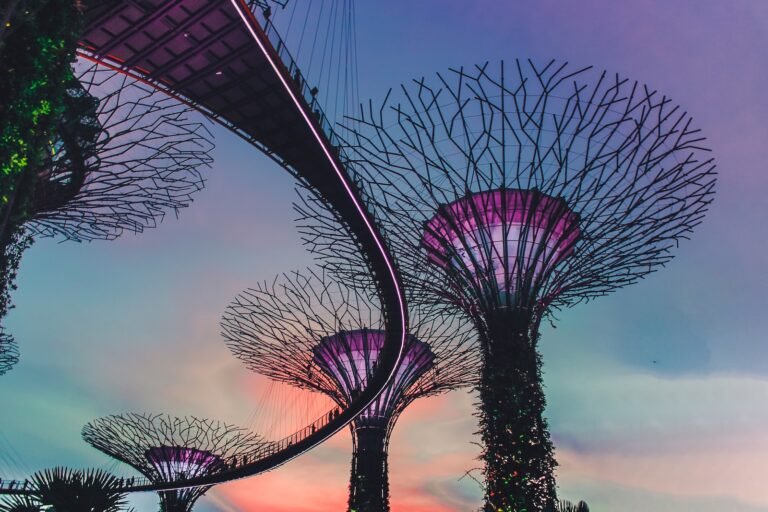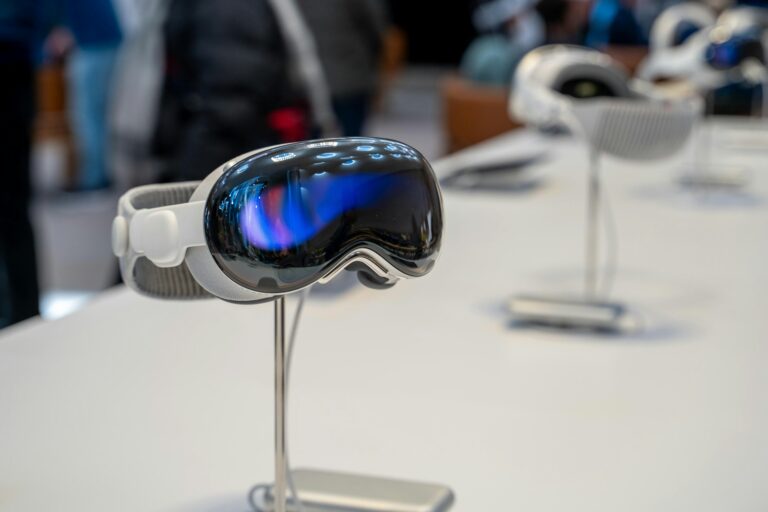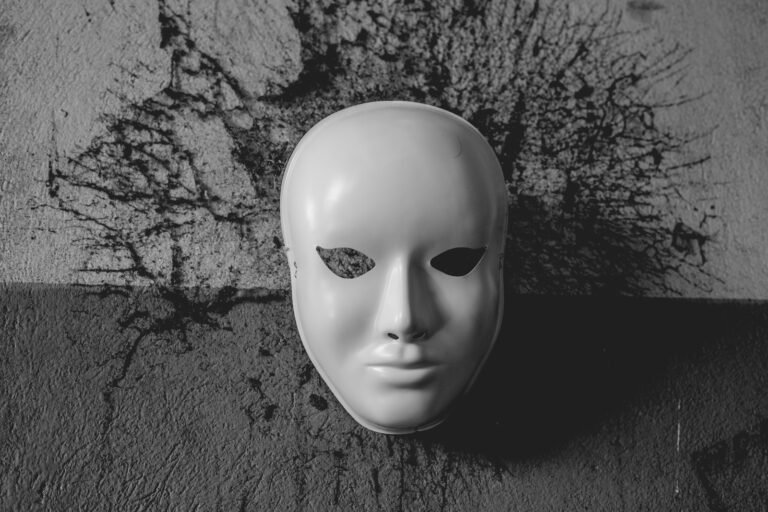The Future of AI-Generated Content & Human Creativity
Last Updated on: 4th June 2024, 12:45 pm
In this report, we will seek to shed light on the ever-evolving landscape of AI-generated content and its intersection with human creativity. As AI systems become more advanced and integrated into various creative domains, questions arise about originality, collaboration, economic impact, and the evolving roles of creatives. The report will look into each of these aspects, aiming to provide a comprehensive outlook on the future of content creation in the age of AI.
Growth & Advancement In AI Models

In recent years, there has been an explosion in the capabilities of AI systems, especially in the domain of content generation. Starting with simple rule-based algorithms, we’ve now transitioned to models like OpenAI’s GPT series which can generate human-like text spanning a multitude of applications.
From crafting intricate stories to simulating coding tasks, these models underscore the vast potential of AI in content creation. The advancements aren’t limited to text; AI has made significant strides in image, video, and audio generation, effectively blurring the lines between machine-generated and human-produced content.
Applications In Creative Domains
As AI continues to mature, its applications in creative spheres have expanded dramatically:
1. Art and Design:
AI tools, taking inspiration from vast databases of artwork, can now produce visually stunning art pieces. These aren’t merely replicas but entirely new creations, often guided by human input. For example, DALL·E by OpenAI can generate images from textual descriptions, enabling artists to conceptualize their ideas rapidly.
An impressive demonstration of this capability is DALL·E’s creation of a “realistic photograph of a young woman with blue eyes and blonde hair” given below –

2. Music:
AI’s foray into music has been transformative. Tools like Jukebox can generate entire compositions, potentially revolutionizing how we produce and consume music in the future.
A standout example of this is the video “I am AI,” which features music composed by the AI platform AIVA. The piece serves as a testament to the potential of AI in reshaping musical creation and can be viewed here –
As of the latest data, the video has garnered 683,872 views and has elicited a rich dialogue with 1,376 comments, underscoring the public’s interest and engagement with AI-composed music.
3. Writing:
Advanced models can draft content that ranges from news articles to poetry. They can be used to brainstorm ideas, flesh out concepts, or even co-write with human authors, ensuring a blend of computational efficiency with human creativity.
4. Film and Animation:
AI’s capability extends to video creation as well, with tools being developed to aid in animation, screenplay writing, and even simulating realistic facial expressions, heralding a new era in filmmaking.
An intriguing application is seen in an “AI Generated Movie Trailer” created by Nicolas Neubert. This showcases how AI can be utilized in crafting compelling visual narratives. As an indication of its impact and the audience’s curiosity towards such innovations, the trailer has amassed 15,000 views.
5. Gaming:
AI has not only enhanced game design but also the gameplay itself. Adaptive enemy AI, realistic environmental interactions, and dynamic story evolution are now becoming standard features in many modern games.
According to a report by The Verge, game developers are getting closer to creating immersive and intelligent games that utilize cutting-edge AI research. This could lead to the development of tools that automate the building of sophisticated games, which can change and respond to player feedback, and in-game characters that can evolve based on player interactions.
6. Performance Arts:
Dance choreography, light shows, and theater performances harness AI for generating sequences, optimizing audience experience, and even for real-time performance adjustments based on audience reactions.
According to a report by Google Arts & Culture, visionary choreographer Wayne McGregor collaborated with the Google Arts and Culture Lab to create a tool for choreography powered by machine learning. The tool was capable of presenting 30 predictive, choreographic options to follow any given movement sequence by any single dancer, devised by three key algorithms.
The AI tool could ingest new movement material and suggest continuations in real time, providing 30 original movement sequences of approximately five to ten seconds for the choreographer and dancers to work with
This extensive integration of AI in diverse creative sectors underscores its pivotal role in shaping the future of creativity.
Collaborative Efforts Between AI & Humans
The narrative of AI in creativity is not one of replacement, but rather, collaboration. The fusion of human intuition and AI’s computational power has given birth to unprecedented creative outcomes.
1. Enhancing Human Creativity:
Instead of starting from a blank canvas, creatives can use AI tools to brainstorm or get a head start on their projects. For instance, writers can leverage AI for initial drafts or to overcome writer’s block, while musicians can get a foundation for their compositions, leaving room for further human innovation.
According to a study by the University of Texas at El Paso, AI tools can be used by creatives to brainstorm or get a head start on their projects. For example, writers can leverage AI for initial drafts or to overcome writer's block, while musicians can get a foundation for their compositions, leaving room for further human innovation
2. Interactive Tools:
Technologies like Google’s DeepDream allow artists to input their own creations and have AI generate enhanced or altered versions. This iterative process results in a symbiotic dance between human input and machine output.
3. New Mediums and Genres:
Collaboration with AI has led to the emergence of entirely new artistic mediums and genres. Artists are creating AI-assisted interactive installations, and musicians are blending AI-generated sounds with traditional instruments to birth new genres.
4. Learning and Skill Development:
AI isn’t just a tool for established artists. Beginners in various fields can utilize AI-driven tutorials and feedback mechanisms to accelerate their learning curves, democratizing creative skill development.
According to eLearning Industry, AI is revolutionizing learning in the corporate setting and empowering today’s workforce. AI can process extensive datasets swiftly, enabling the formulation of informed decisions, and paving the way for personalized learning experiences.
By reshaping skill development into personalized journeys, we can create actual growth opportunities for individuals. AI can also facilitate virtual environments that promptly address queries, simulating authentic real-world problem-solving scenarios, thus elevating skill development to new heights.
5. Personalization:
In the domain of content consumption, AI ensures tailored experiences. For instance, AI-driven algorithms can modify a story’s direction based on a reader’s preferences or mood, providing a personalized reading or viewing experience.
The beauty of this partnership is in its reciprocity: humans guide AI's vast capabilities with a touch of intuition, emotion, and cultural nuance, while AI offers humans a toolkit to amplify, enhance, and diversify their creative expressions.
Human Creativity In The Age of AI:
The surge in AI capabilities naturally brings questions to the fore regarding the space and significance of innate human creativity. While AI systems can mimic patterns, structures, and even sentiments, the essence of human creativity remains both distinct and valuable.
1. Intrinsic Human Traits:
At the heart of human creativity lies a plethora of experiences, emotions, cultural contexts, and subjective interpretations. These aspects, deeply rooted in our shared human journey, are challenging for machines to replicate fully.

An AI might be able to compose a symphony or draft a poem, but the lived experiences, memories, and nuanced emotions that often inspire human creativity remain uniquely ours.
According to AIContentfy, One of the major limitations of AI-generated content is its lack of creativity and originality.
2. New Creative Avenues:
As with any technological advancement, the emergence of AI has not stifled but instead enriched the artistic landscape. Just as photography introduced a new medium without eradicating painting, AI-generated content offers new avenues and genres of expression. These new forms are collaborative, where AI and human imagination meet, leading to previously uncharted territories of creative expression.
3. The Changing Landscape of Education:

The intertwining of AI and creativity demands a reimagining of how we teach and nurture creativity. The future might see educational curriculums that not only focus on traditional creative skills but also on how to effectively collaborate with AI, maximizing the combined potential of man and machine.
According to a University of Washington associate professor in the Information School, AI tools can be used to make learning more creative, but teaching kids to use AI creatively and critically isn’t easy. This is where the combined potential of humans and AI comes in.
4. Evolution of Roles:
The role of human creatives is undergoing a transformative shift. From being sole creators, many are becoming curators, guiding and refining AI outputs, blending machine efficiency with human touch, intuition, and ethical considerations.
5. Reinforcing Authenticity:
With the proliferation of AI-generated content, there will likely be a renewed appreciation for purely human-made art, characterized by its imperfections, quirks, and authenticity. This dual existence – of perfectly crafted AI content and raw human creations – will further diversify the creative world.
6. Collaboration Over Competition:
The optimal future does not see AI as a competitor but as a collaborator. By taking over repetitive and structured tasks, AI can free human minds to explore, innovate, and push the boundaries of what’s creatively possible.
Final Thoughts
The integration of AI into the domain of creativity presents both exciting possibilities and challenges. As AI models evolve, they offer unprecedented tools that can amplify human creativity, opening doors to innovative forms of expression. However, the essence of human experience, emotion, and intuition remains irreplaceable.
The future lies not in choosing between human or AI but in harnessing the symbiotic potential of their collaboration. This partnership promises a rich, diverse creative landscape where technology and the human spirit coalesce.
As we navigate this evolving frontier, striking the right balance between AI capabilities and human authenticity becomes vital. Embracing AI’s potential while celebrating the unique facets of human creativity ensures a vibrant, enriched future for artistic endeavors.





